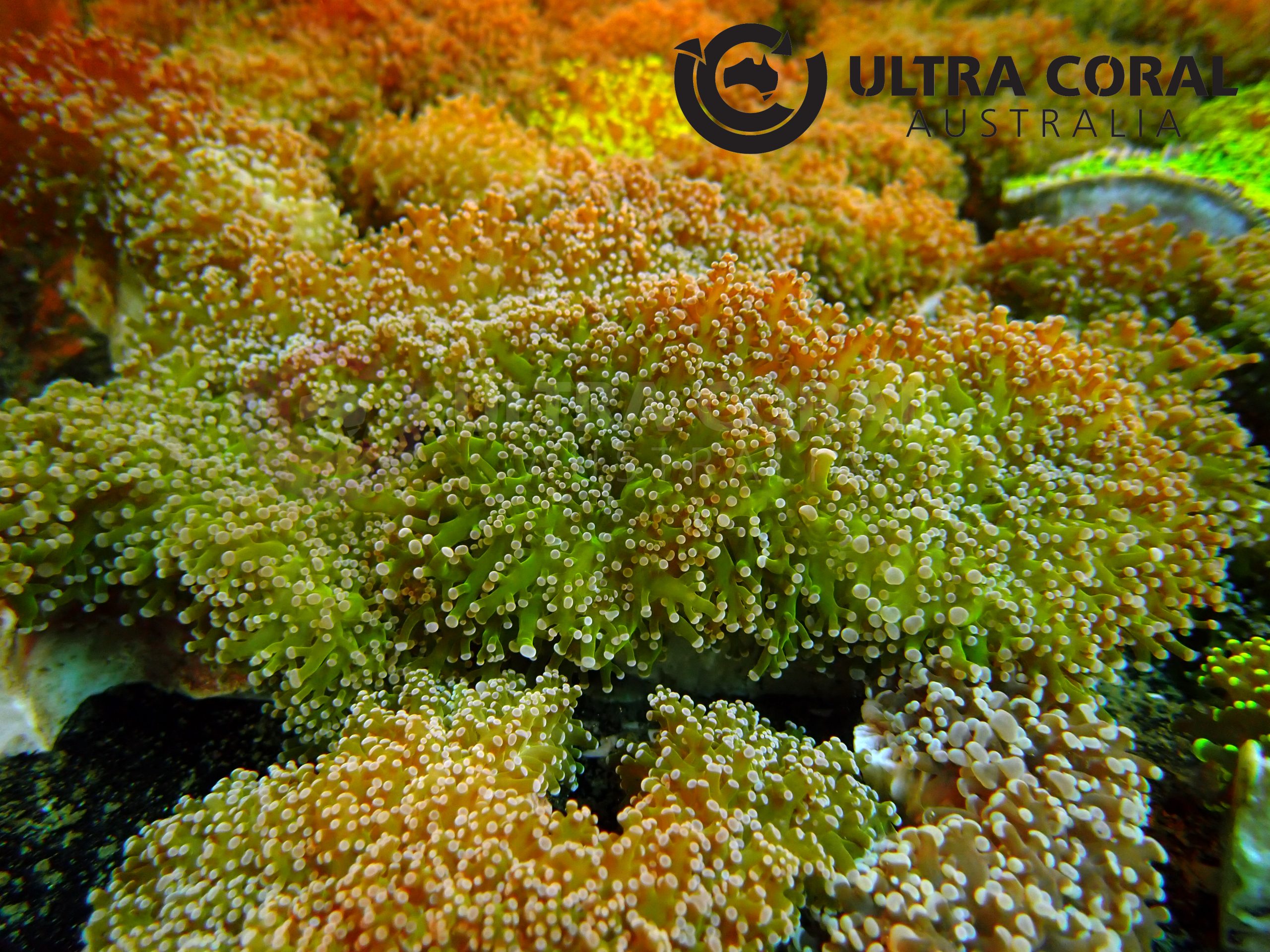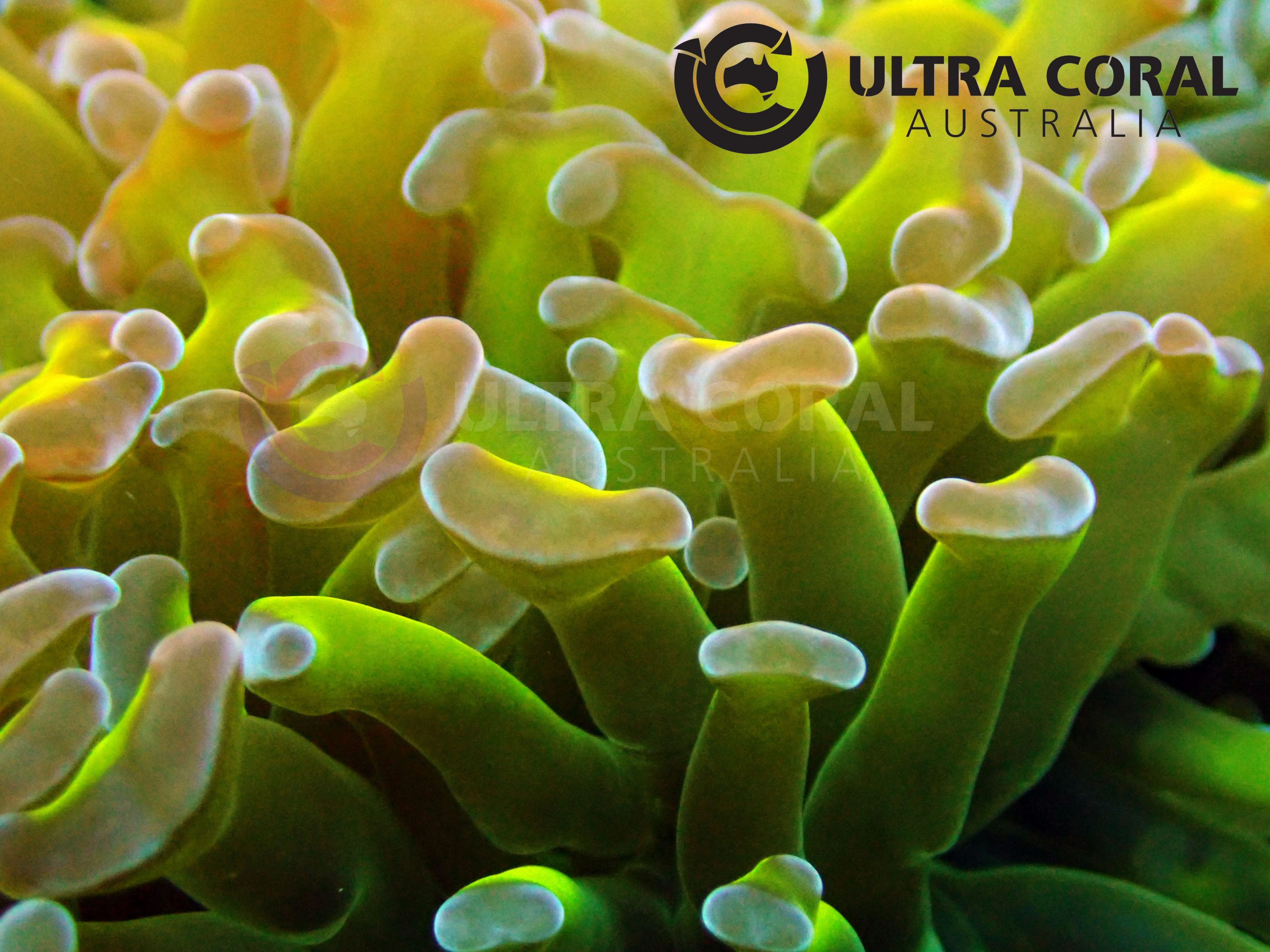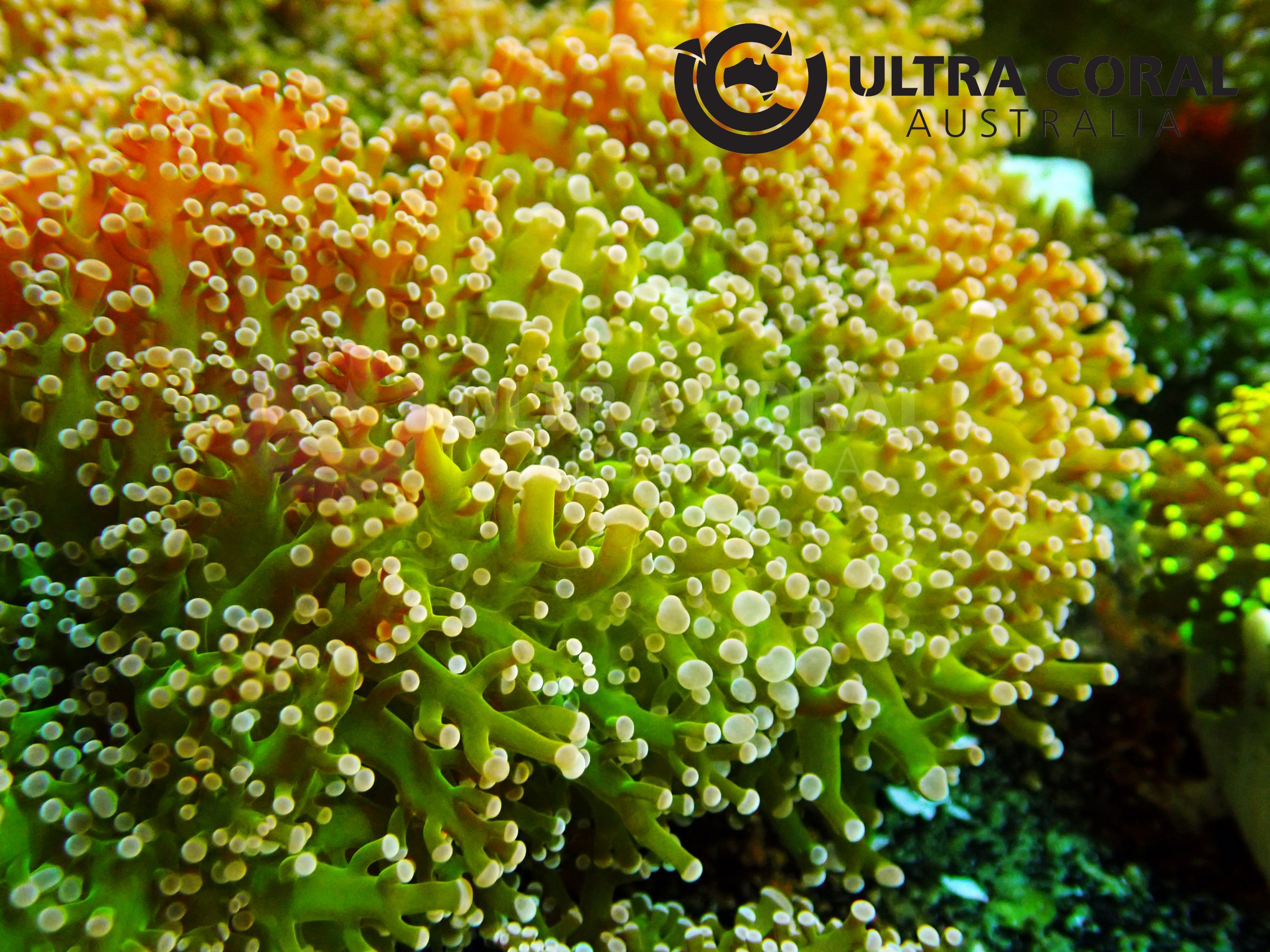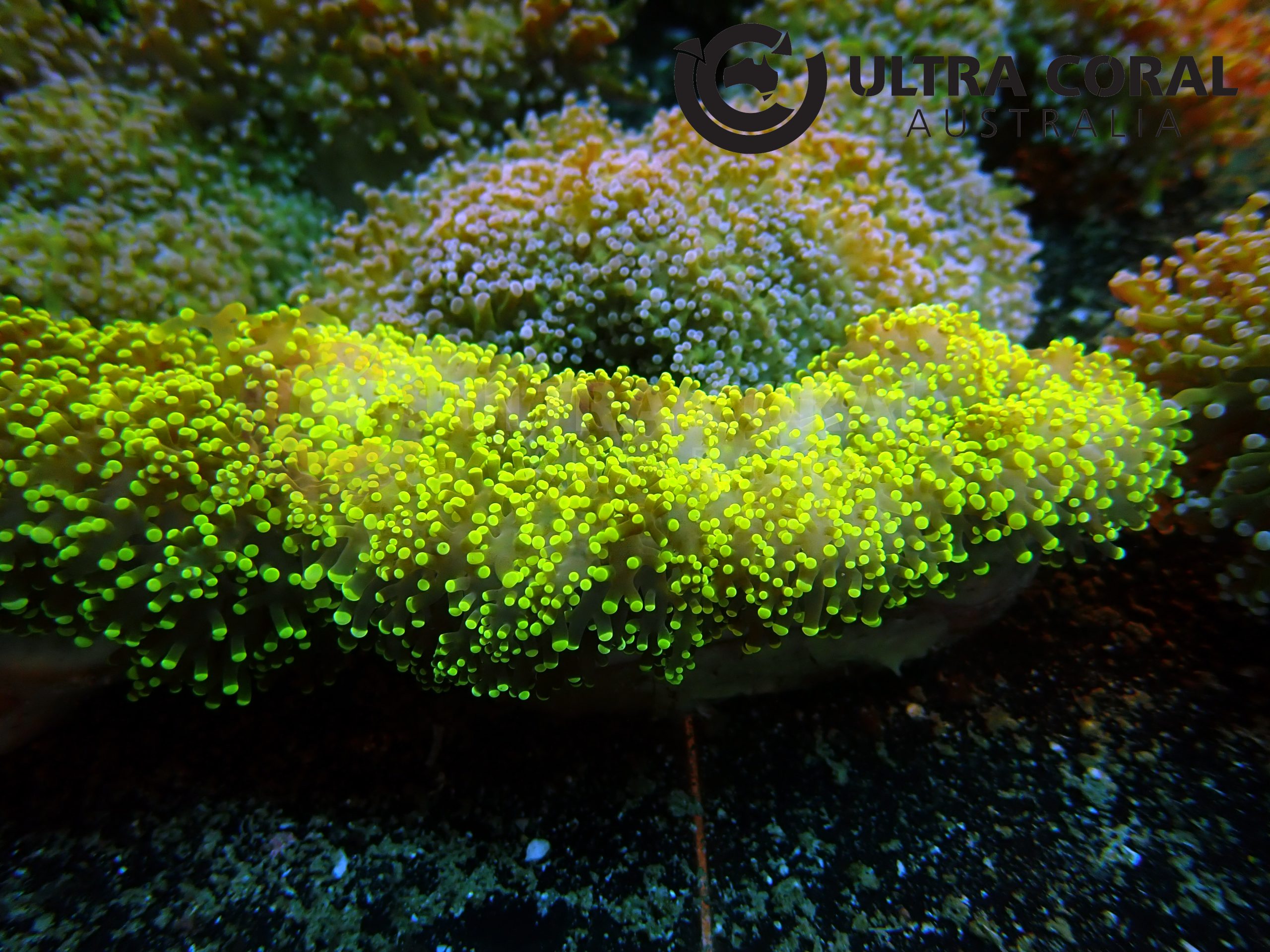Euphyllia divisa

The name Euphyllia divisa is largely derived from having tentacles that are ?divided? at the end; hence the common name Frogspawn Coral or Octopus Coral.
Tentacles can be tan to brown or green to yellow, and the contrasting tips can be pink, lavender, white or cream.
In the wild, Euphyllia divisa is found in shallow, turbid water, often on muddy substrates and reef slopes.
They form small colonies in waters that are turbid, yet gentle, and enjoy indirect bright light.
They also have stinging cells to help capture small prey and to defend themselves against predators. The availability of passing food will contribute to their success.
Basic Water Parameters
pH
8.0 to 8.3
Salinity
34 - 36ppt
Temperature
24.0 - 26.0 Celsius
Husbandry Requirements
Lighiting
180+ PAR - 110-175 PAR
Flow
Some turbulence required
Aggressiveness
Has long sweeper tentacles and/or strong stinging ability that can damage most other corals.
Acclimation Guide
- It is highly recommended to acclimate all corals to a new environment to prevent shocking corals.
- Place the corals in the water from the packing bags and slowly add the water from new environment (Dripping method is recommended).
- Use the water parameter above as a guide.
- When the vessel becomes full , replace the water with the new environment water by a small amount at a time.
- Ensure the water temperature matches with the new environment’s water.
- After the corals have spent adequate time in the acclimation water, gently place the corals to a new environment.
- It is recommended to place new corals under lower light intensity than usually required. Once corals show no signs of stress, it can be moved to higher lighting area gradually.”




